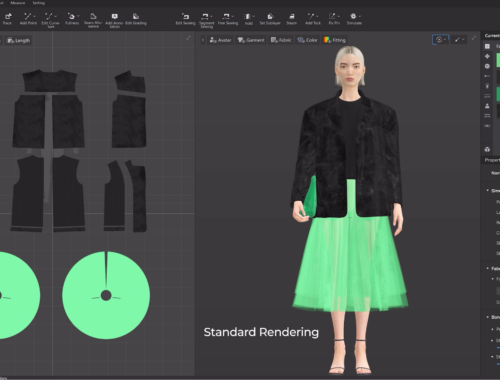Reviewing a 70-Year-Old Drysdale Special Road Bike
In today’s carbon-framed fat-tubed push-button bicycle landscape, it can be difficult to find a bike that truly stands out. Enter the Drysdale Special.
Note: Alvin Drysdale built bicycles in New York City from the 1930s into the 1950s. You can read more about him here. The original owner of this Drysdale Special ordered it in October 1949, putting down an $80 deposit against a total purchase price of around $200. Jeff Groman then bought it from the original owner’s son in the late 1980s, and it is now part of the Classic Cycles collection on Bainbridge Island, Washington. I currently have it on loan. The bike is almost 70 years old, but it’s so much fun to ride that it might as well have been built yesterday. So I thought it would be fun to review it as if it had.
New York City–based custom frame builder and reclusive genius Alvin Drysdale has never won any awards at NAHBS, nor has he even exhibited there. His Drysdale Special, however, is nothing short of revolutionary in its approach to the drop-bar bicycle. Its frame is lean where others are chunky; its cables are exposed where others are hidden; its components and bearings are serviceable where others are integrated and disposable. It has clearance for wide tires yet it has the elegant lines of a bare-bones road racer. Indeed, so unique, so utterly beyond categorization is this bicycle that it’s difficult to know where to begin.
Might as well start with the frame.
Drysdale eschews run-of-the-mill carbon fiber and instead builds with an exotic ferrous material known as “steel.” The tubeset he employs is branded as “Reynolds 531” and is joined together by means of artfully sculpted junctions called “lugs,” into which the tubes are brazed. Not only can a steel frameset in the hands of a master builder easily rival or exceed the ride quality of a carbon frame, but it is also profoundly durable, eminently repairable, and totally recyclable. Sure, it’s a bit heavier than carbon, but just imagine dropping or crashing your bicycle without having to inspect it for hairline cracks or probe it with an endoscope like you’re administering a colonoscopy. Indeed, a rider could potentially hold on to a steel bicycle for years without worrying that they may be riding a ticking time bomb.
Then there’s that level top tube. Sure, it looks funny, but by drastically reducing the length of the seatpost, Drysdale is no longer depending on a single component to determine much of the bicycle’s ride feel. Instead, he’s relying on his considerable expertise in frame building and tubing selection to make the best-riding bike possible. Brilliant.
The versatile properties of steel also allow Drysdale to equip the frame of the Special with some ingenious details. For example, a pair of pegs on the seat tube holds a tire pump, and external ports on the bottom bracket shell mean you can lubricate the bearings without pulling the crank. Indeed, given steel’s incomparable mix of durability, practicality, and performance, it’s clear that this miracle material has enormous potential, and I wouldn’t be surprised to find that it’s all but replaced carbon fiber on high-end racing bicycles by 2020.
The components on the Drysdale Special are no less innovative than the frame. In lieu of complicated and expensive-to-replace shifting mechanisms, the shifters on the Drysdale are entirely divorced from the brake levers and instead reside on the downtube, where the rider changes gears by means of a pair of simple, lightweight, and beautifully ornate aluminum stalks. (While operating these shifters requires briefly removing one hand from the bars, it should pose no difficulty for the competent cyclist, and they’re also virtually impossible to destroy in a crash.) As for the cockpit, revolutionary new external brake cable routing means you don’t have to rewrap the bars for service, and a cutting-edge threaded headset arrangement allows you to raise or lower the bars simply by loosening and tightening an expander wedge in the stem. Perhaps most striking, the Drysdale Special does away with visually obtrusive and rub-prone brake rotors; instead, the cable-actuated calipers grip the aluminum wheel rim itself, which effectively doubles as a wide-diameter rotor. The whole package is topped off with an aggressively pre-aged leather saddle from fashionable upstart Brooks, and overall the bicycle cuts a jaunty, dignified countenance—think Surly, but attractive.
So how does the Drysdale Special ride? Well, I admit that I was skeptical at first. After all, the Drysdale has twice as many spokes per wheel (36) as a typical road bike and half as many cogs (5). It also metal handlebars(!) wrapped in cloth(!!!), and there’s a disconcerting lack of gaudy decals. (Without lots of decals, how are you supposed to remember what kind of bike you’re riding or know that you’re experiencing “Super Smooth Seatstays” and sending all your watts through the “Mega-Power Downtube”?) Also, preride prep is somewhat counterintuitive, and I spent a good 20 minutes trying to charge the shifters before realizing I didn’t even have to.
As it turns out, my skepticism was completely unfounded. If riding Di2 is like punching up your favorite playlist on Spotify, then using the friction downtube shifters on the Drysdale is like finding a Beethoven symphony on an analog radio: It might make take you a little longer to tune it in, and it will never be completely static-free, but overall it’s a more transcendent listening experience. The narrow gearing also turned out to be a performance boon. Sure, you’re not spinning your way up any climbs with a 48×23 “low” gear, but sometimes being forced to push a bigger gear gets you to the top faster, as the PRs on my Strava can attest. Plus, let’s be honest: Most of us are lazy cyclists who would keep downshifting until we fell over if we could, and on the Drysdale that’s simply not an option. (Granted, you could also fall over because you’re unable to turn over that 55-inch gear, but fortunately this did not occur during the testing period.)
This is not to say I didn’t have any quibbles. The braking could be better—a lot better. The foot-retention system, which involves putting on perforated-leather ballet slippers and lashing your feet to the pedals with leather straps that you have to undo at each stoplight, is also a bit awkward, not to mention pretentious. Hex-nut fasteners are an odd choice and prone to rounding, though they do allow you to forego a multitool in favor of a single adjustable wrench. And while I appreciated the pump pegs and lube ports, I would also have appreciated an additional water bottle mount, which would have brought the total count up from zero (0) to one (1).
Nevertheless, all these petty concerns fell away as I descended on this sublimely smooth and stable machine, and in my maroon wool jersey, I felt like an autumn leaf wafting earthward. On the flats, it may have been difficult at times to eliminate the chatter from the drivetrain, but the preternatural smoothness of hubs and bottom bracket unencumbered by draggy cartridge bearing seals more than made up for it. And with my hands in the drops and the Campagnolo Gran Sport in the 50/14 combo as I spun the Stronglight crankset with my ballet slippers, the bike positively flew.
It might be tempting to dismiss Alvin Drysdale as a hipster upstart, but with his innovative Special, he may very well usher in a new era of invigorating simplicity.
Special thanks to Paul Johnson of Classic Cycles for loan of the bike.
You May Also Like

AI in Fashion: Revolutionizing Design, Shopping, and Sustainability for a Smarter Future
March 1, 2025
The Future of Fashion: How Artificial Intelligence is Revolutionizing the Industry
February 28, 2025